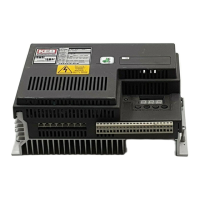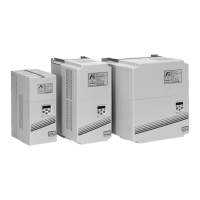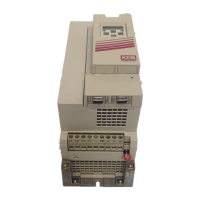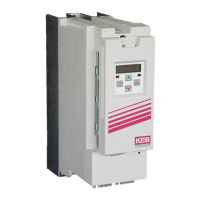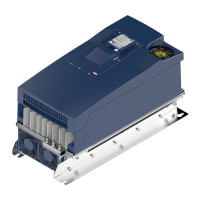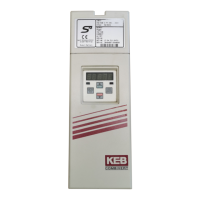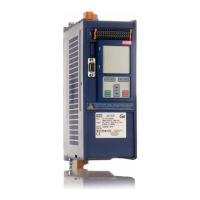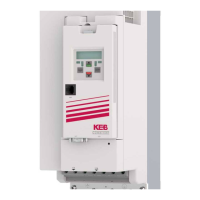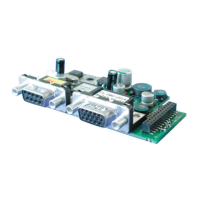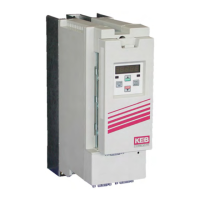165
Diagnostics and Troubleshooting
Problem Cause/Solution/Troubleshoot
Encoder slippage/mounting
(PM motors)
The position of the rotor must be known for synchronous (PM) motors
for the drive to properly commutate the stator magnetic eld and
generate torque. Performing a encoder/rotor position learn (LF.03 =
SPI or PLrn Encoder Pole Position Learn) determines a corresponding
encoder position offset value for a given rotor position. The encoder is
a mechanical extension of the rotor and therefore acts as an electrical
commutator.
If the mechanical relationship (eg. mounting) between the motor
and encoder changes (eg. slippage), the position information from the
encoder does not accurately re ect the actual rotor position resulting in
the actual commutation angle being incorrect.
When the commutation angle is not correct, more current is required to
produce a given amount of torque. Large enough changes will result
in very high current draw and low torque production. This leads to
the motor being unable to move (stalling) or unable to hold the load
(movement in direction of load, eg. empty car counterwieights pull car
up). In this case, the current is often reaching the corresponding 0.LF36
Maximum Torque limit or the peak current rating of the drive,
If the encoder/rotor position is re-learned and determined to
be different than the previous value of the LF.77 Encoder Pole
Position by more than 4,000 counts, then this is a clear indication
that the mechanical relationship between the motor and encoder
has changed.
In most cases, encoder slippage has occurred or there is an
encoder mounting issue. The accumulation of slippage may occur
over distance (between a few inches of movement or the entire
hoistway), over time (sometimes after several years of operation), or
from a change in direction (sometimes due to loose encoder mounting).
The suggested course of action would be to rst inspect the encoder
mounting (in many cases, the encoder may actually be mounted tight),
remove the encoder and inspect again, and re-install the encoder then
relearn the encoder position (it will be different than before the encoder
was removed). If issues persist, re-learn the encoder/rotor position.
If large difference between learns persist (it is important to move car
between learns to accumulate slippage, if this is the issue), continue to
inspect the motor and encoder for mounting issues.

